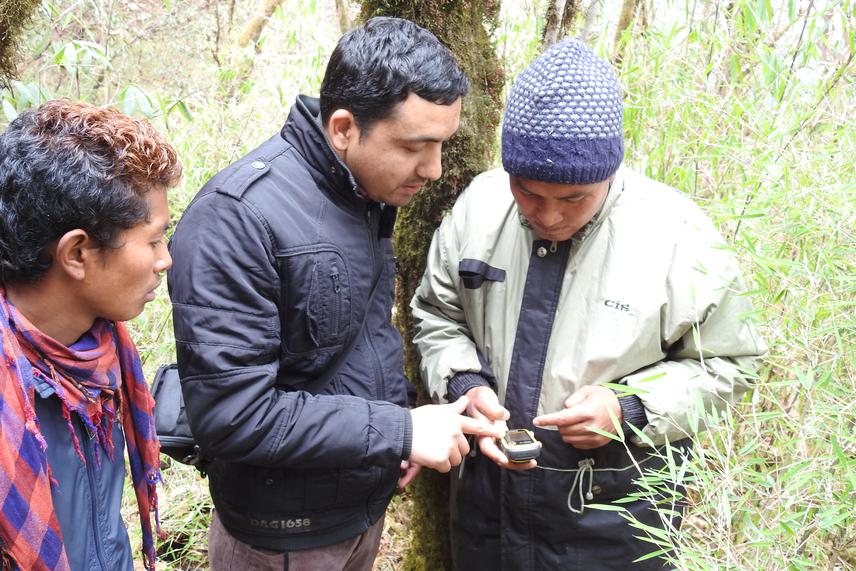Arjun Thapa
Other projects
12 Mar 2012
Conservation Status of Red Panda (Ailurus fulgens) in Gaurishankar Conservation Area
Main aim of project is to address prevailing threats of red panda through establishment of community participatory monitoring and conservation activities, and promote areas as ecotourism destination for livelihood enhancement.

Handling and recording location.
Red panda (Ailurus fulgens) is an endemic to Himalaya, an indicator species of Eastern Himalayan broad leaf and conifer eco-region. Nepal harbours about 5% of global population which is estimated about 350-550 wild population (Jnwali et al. 2011).Gaurishankar Conservation Area (GCA) is recognized as prime habitat for red panda in central part of the country and population distributed in nine isolated of habitats. However, these isolated populations are enduring threats through intensive grazing pressure, poaching, killed by dogs and fire wood collection that influence animal toward in verge of extinction in wild. Furthermore, insufficient ground-based conservation activities are primary bottle-neck in conserving wild red panda due to inhabitants of remote and inaccessible mountain terrain. Realizing this, establishing community participatory conservation is a crucial effort to draw attention on red panda conservation which is a cost effective way to collect reliable data. Broadly, project's aim is to establish community participatory red panda survey and monitoring mechanism to ensure ownership of local communities in biodiversity conservation.
This project will cover ground-based survey, capacity building and extension of conservation social networks in project sites. To achieve project's goal following objectives will be addressed:
(a) develop and draft locally adapted community participatory red panda monitoring protocol in Nepali language;
(b) train and promote local community people as Local Citizen Scientist (LCS)
(c) establish permanent monitoring transects and conduct conservation awareness in edging areas.
Finally, community based monitoring mechanism will be established and regular monitoring will continue under LCS member as long term conservation. Through project three stakeholders; governmental, non-governmental conservation organization and local communities will be impacted and contribute in biodiversity conservation.